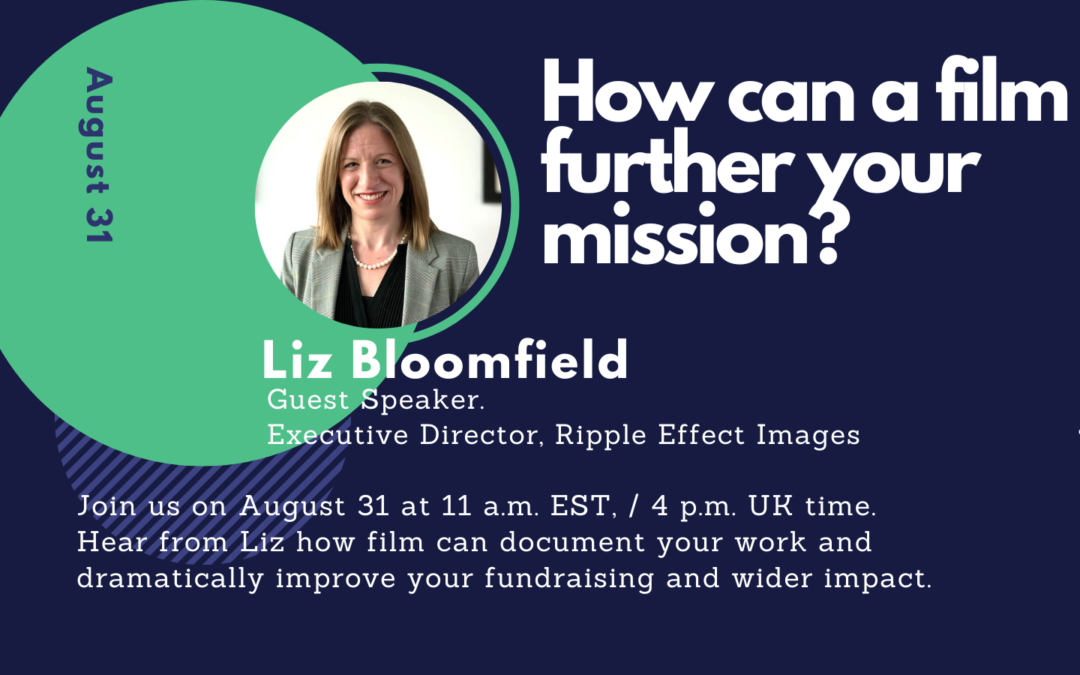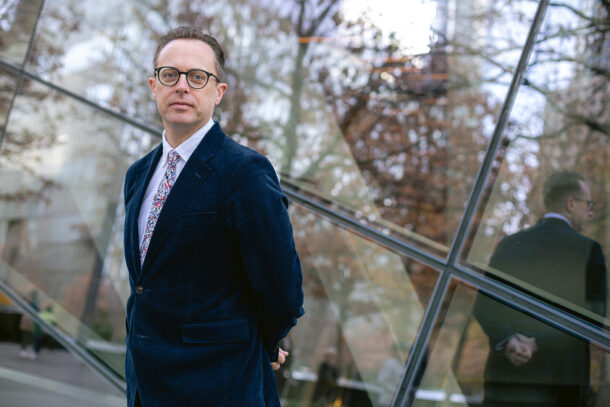Thinking about how film can help you meet your strategic goals?
Join guest speaker Liz Bloomfield and me on LinkedIn Live on August 31 at 11 a.m., EST, 4pm U.K. time. We’ll be talking about how film can document your work. It can also increase your fundraising and wider impact.
You can sign up for the event at LinkedIn here.
Liz is executive director of Ripple Effect Images and a pro at delivering amazing films for organizations all over the world. She’ll be able to answer all your questions about how it all works.
I don’t know about you, but film has always had the power to grab me in a way other media don’t. I say that as somebody who’s made his living mostly as a writer. It’s like a shepherd telling you leather is the best way to stay warm. I get it. But when I’m not reading books or newspapers or magazines, I’m watching films. It’s all part of the same storytelling language, to me.
After I left journalism, I worked for 18 months at a film studio in London’s Shoreditch. They were kind enough to let me serve the business as an Account Director. I managed their client relationships and helped develop their business. One of my abiding memories was going to an Argos (they’re like the British version of Target, -ish, but surprisingly British and non-translatable, actually) in Hackney to buy three children’s dolls. We planned to try melting their faces in different ways for a hard-hitting 30-second film. This horrific experiment was all about conveying the dangers of hair straighteners. Don’t leave them on, and out! You can watch the film and read more about the brief here if you’re interested. I really enjoyed all the different projects we managed, and working with such creative teams of people.
The film about the dangers of hair straighteners generated significant online engagement and media coverage. The organization behind it received thousands of requests for heat-proof pouches, beating expectations. Two leading hair straightener manufacturers got in touch, too. They agreed to provide heat-proof pouches as standard with their products. It struck me, working on this project, how film could grab people in ways that words alone don’t, always. Sure, if your research is hard-hitting and you can tell a story of scale and scope, then sometimes, words will do it. But if you want to grab people by their dopamine centers and take them on a journey, there’s science. It says film stimulates the part of the brain that releases serotonin. It’s the same part of us that gathered around campfires in caves and passed on stories as a method of survival. There’s something primal about it. It’s why I love to go to Film Forum in New York and watch anything they’re showing.
Then, of course, there’s the question of money. Why should a nonprofit or a social cause invest in filmmaking when the cost of doing so can be significant? For me, it comes down to how much you believe in your work. If there are people who can tell the story of why it matters, then I say, shoot them in close-up. It’s an investment that in my experience more than pays for itself. You build more support by demonstrating your value. Likewise, the costs have come down a little in recent years as digital techniques have replaced analog ones.
The big question for me is: Would you rather watch a James Bond film, or read a James Bond novel? The truth is, even the terrible films are more engaging than most of the books. Even the Roger Moore ones. And there we have it. Nobody does an argument for film better.


